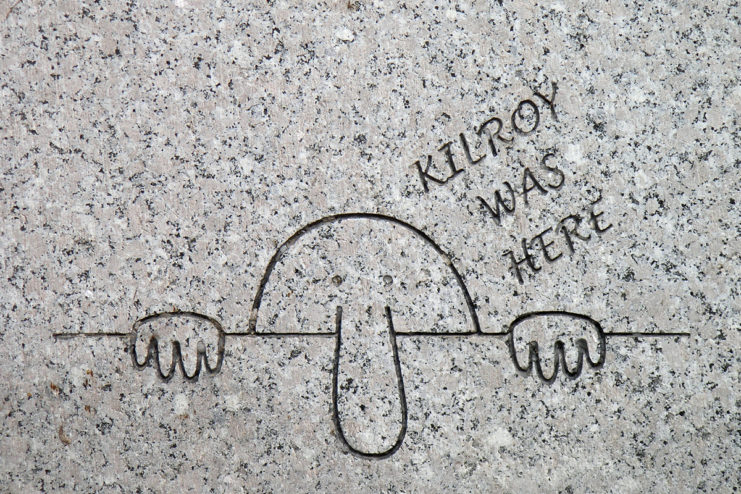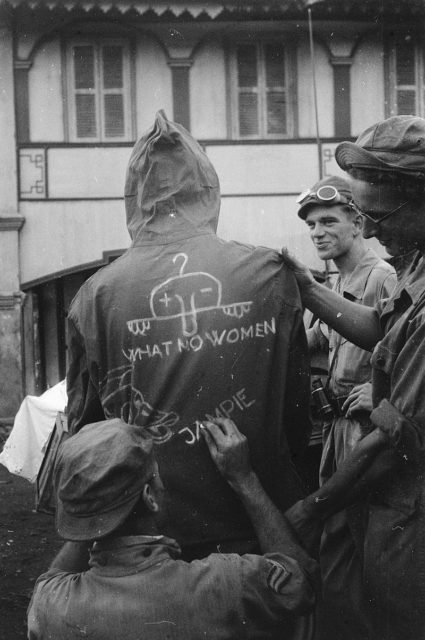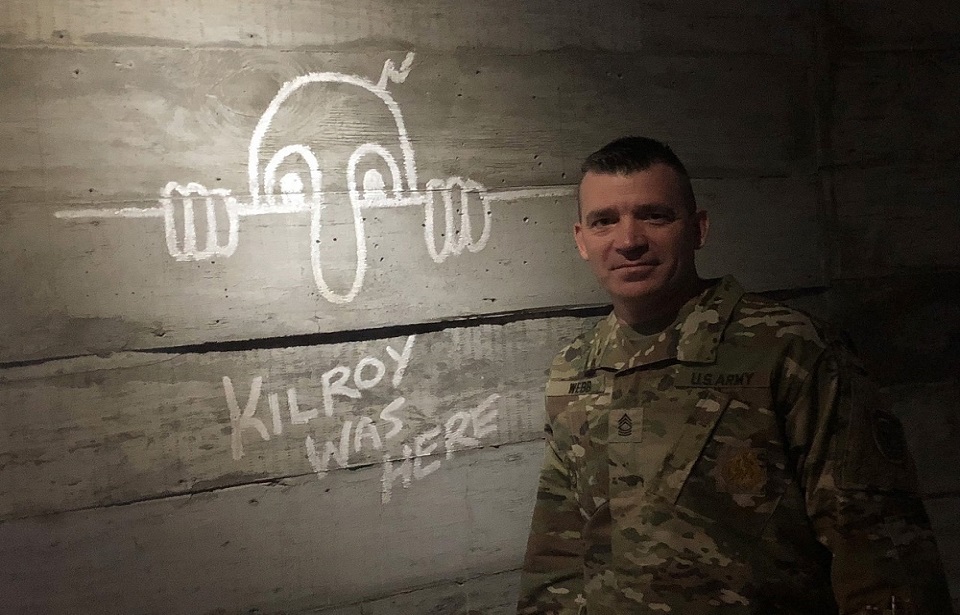If you found yourself in an area where American soldiers were or had been during WWII, there’s a high chance you will find the “Kilroy was here” graffiti scribbled on a wall somewhere. This drawing was an old-school meme, and its location was part of the joke. The most difficult-to-reach places were best, but they could be found drawn on vehicles, walls, ceilings, toilets, and captured equipment. While the meme was mostly associated with American soldiers, it was drawn by many of its allies.
As usual, the origin of this comical piece of history is murky.
Kilroy was here
The easiest place to start on the origins of the graffiti is with its slogan, “Kilroy was here.” Many people have claimed to have started the trend, but one of the most widely accepted origins is with James J. Kilroy. Kilroy was a ship inspector at the Fore River Shipyard in Quincy, Massachusetts. Like others, the Fore River Shipyard was operating at maximum capacity to pump out as many ships as possible for the war effort. Kilroy inspected the work of riveters once they had ended their shifts.
At the time riveters were paid by the rivet, so inspectors would mark where they had finished with chalk so bosses could pay the workers their owed amount. Some greedy riveters took to the practice of rubbing out these chalk lines and moving them further along to take credit, and therefore pay, for another riveter’s work.
Kilroy put a stop to this by using more durable chalk and writing “Kilroy was here,” to make it clear where he had inspected.
The exact amount of ships Kilroy inspected isn’t known, but few would have been carefully painted inside due to the rush to get them into action. As a result, it is likely that his mark of “Kilroy was here” would have been seen by thousands of troops on the ships who spread the graffiti around the world.
The next possible origin comes from another Kilroy, this time Sgt. Francis Kilroy, an airman from Everett, Massachusetts. One of his fellow airmen wrote “Kilroy will be here next week” on an airbase bulletin board while Kilroy was ill with the flu. Like the previous potential origin, the note may have been picked up by other airmen and used abroad.
However, Kilroy was here was only one half of the meme, with the other being the cartoon face peering over a wall. The beginning of this face is even vaguer.
Chad

This face likely came from the British, who knew it as Chad, or Mr. Chad. In this form, the face was accompanied by the slogan “Wot, no__?”. The slogan would be completed with an item that was missing, likely something related to the situation at hand. In one instance, a British 1st Airborne Division glider in Operation Market Garden had “Wot, no engines?” written on its side.
This slogan became popular in Britain in the late 1930s and started independently from the face. In this scenario, it would often be used to express discontent with rationing, like “Wot, no sugar?”.
Chad may have come from the Royal Air Force, where electricians adapted the drawing of an RLC circuit into the character. This does closely match the face, with the distinct long nose, face, eyes, hair, and hands gripping the wall.

As one story goes, an RAF airman wrote “Wot, no leave?” under a drawing of the circuit after their instructor had left the room. Another idea suggests it came from the Greek Omega symbol.
Chad may have been created in 1938 by British cartoonist George Edward Chatterton, who was nicknamed “Chat.”
Regardless of where its exact origins are, most agree that it merged with the American slogan in 1944.
The meme began popping up everywhere, on aircraft, tanks, barracks, houses, brick walls, and bunkers. As mentioned, the more difficult the location the better, so many were found in some of the most obscure places.
Popularized by American troops, it became synonymous with the G.I.; if there were Americans around, Kilroy wouldn’t be too far away.
